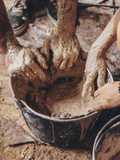Affairs: Migration / Spain
Back to the land
Europeans have flocked to cities but what remains of the villages they left behind? In Spain, we meet the folk fighting to resurrect forgotten communities.
All is quiet in the village of Used in Spain’s northeastern Aragón region. That is, apart from the voices coming from behind some old, loosely chained wooden doors. A staircase leads to an attic where apprentices are shoving their hands into a bucket of viscous grey matter. The substance is gypsum and the assembled architects, engineers, artists and rural homeowners are here for a three-day plastering workshop.
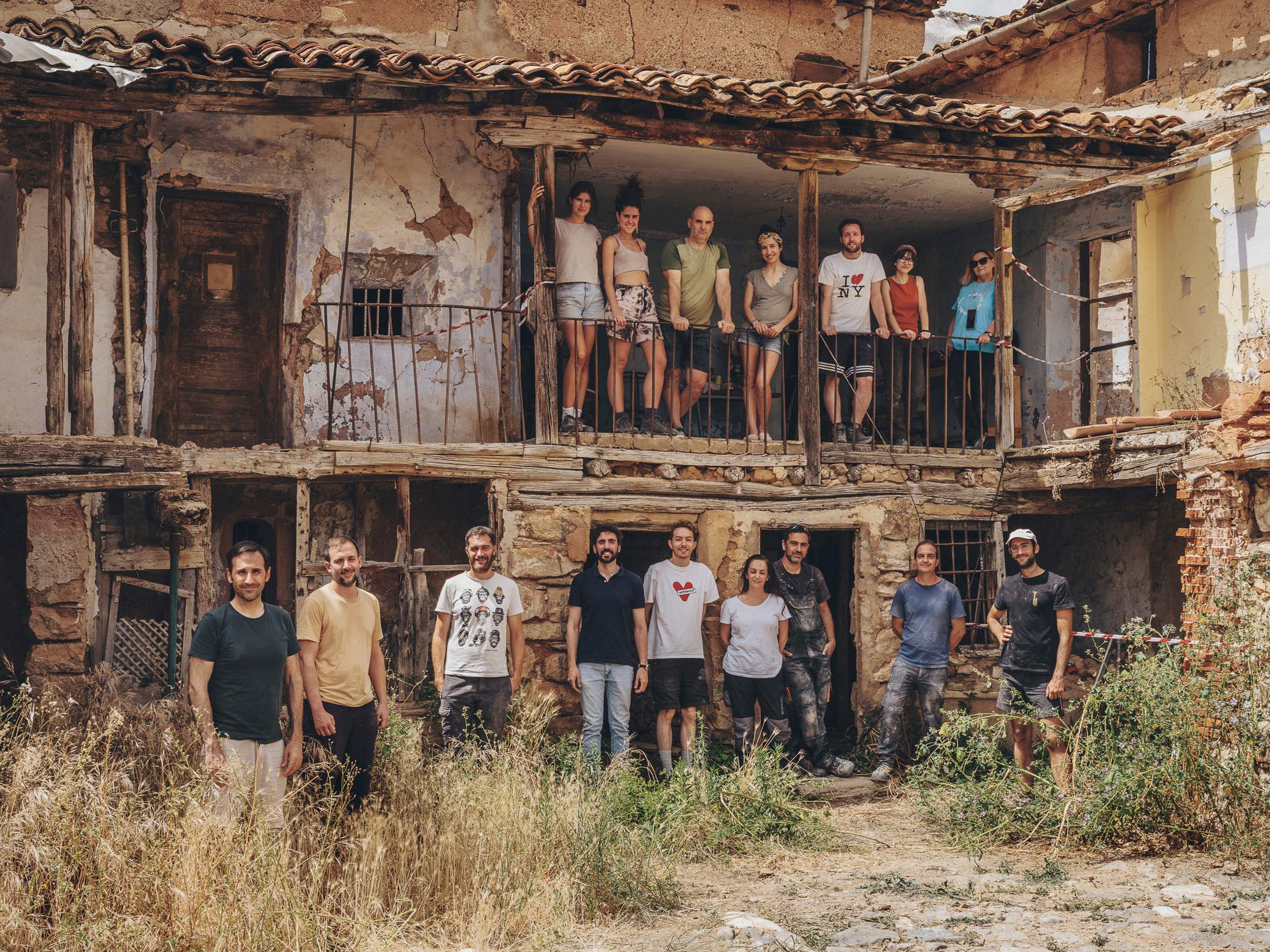
Participants of the plastering workshop at Guillermo Bosque’s house in Used
The aim of this get-together, run by the non-profit Asociación Fuset, is to teach traditional building techniques. But there’s also a much larger objective. If people could appreciate the cultural heritage of buildings in Spain’s countryside – and learn how to restore them – maybe more would take a punt on buying one. In turn, they would be doing their part to halt rural population decline and even create new jobs. “People don’t always know how to value what they have,” says Miriam Estella, a workshop attendee who has been fighting a house demolition in the nearby village of Montón.
Used native and association co-founder Alberto Sánchez, who bought a house here in 2017, puts it another way: “These homes have something intangible that you cannot purchase,” he says. “They have an intrinsic value.” Both he and fellow founder Guillermo Bosque, a Bilbao transplant who arrived in 2021, have been using their historically rich but dilapidated homes as architectural guinea pigs ever since. Today is Bosque’s turn to host.
Driving here from Madrid takes a little less than three hours. Past the city of Guadalajara, after an initially slow ascent, the countryside flattens out into a vast sun-beaten plain known as the Meseta. Passing cars are rare and the only activity is the occasional combine harvester kicking up dust as it crosses golden fields of wheat. Small villages with open-air pelota courts and medieval churches break up the monotony, while derelict stone buildings on their outskirts point to more affluent times. Wind turbines fleck the horizon.
This is the heartland of what is known as España Vaciada (“Emptied Spain”), a reference to rural depopulation that has left many villages struggling. It’s a term on the lips of politicians from Andalucía to Extremadura, scrawled on the banners of social movements and fed through TV news anchors’ teleprompters. It has been given fresh emphasis as people reassess their lives after the pandemic.
The route:
Over the course of five days, Monocle crossed northern Spain from east to west, from arable stretches of Aragón to the more northern European feeling villages and forests of Galicia. None of these places are more than two hours’ drive from major cities such as Madrid, Zaragoza, Barcelona or Vigo, and yet they’re some of the most “emptied” parts of the country.
Stop-off points:
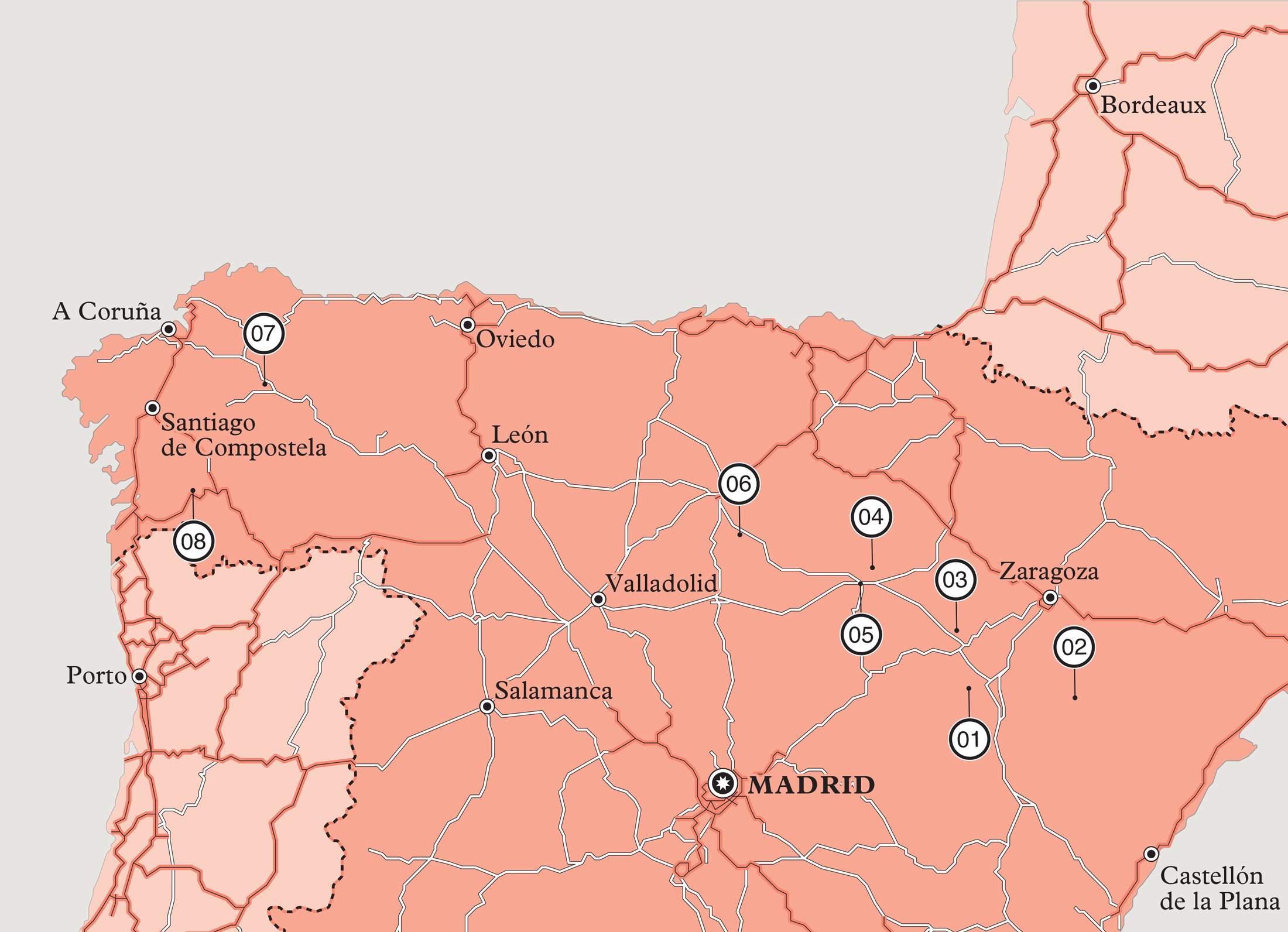
1. Used, Aragón
2. Oliete, Aragón
3. Torralba de Ribota, Aragón
4. Fuentelfresno, Castilla y León
5. Soria, Castilla y León
6. Covarrubias, Castilla y León
7. Lugo, Galicia
8. Muimenta, Galicia
Used now has just 271 residents; in 1940 its population was 1,508. Lately, the pace of depopulation has slowed but the trend continues: between 2010 and 2019, 6,232 of Spain’s 8,131 municipalities decreased in population. About half of them are what the EU refers to as at “demographic risk”, meaning that their populations are set to decline beyond the point of no return due to an ageing population and low birth rates. Of course, Spain’s problems aren’t unique – other southern European nations, most notably Italy, are experiencing this too. Stories of Italian houses being sold for €1 have been tabloid fodder for some time, while a 2020 study by The Lancet predicted that both countries’ populations are likely to halve by 2100. The EU’s contracting population is also leading to a flurry of Brussels-produced planning papers and existential questions about the continent’s diminished global position.
But Spain’s problem has a particular cultural resonance. Starting in 1939 and lasting for more than three decades, the dictatorship of General Franco focused on economic development that favoured Spain’s cities. During the second half of the 20th century, the country lost about 40 per cent of its rural population as part of a massive exodus to urban centres. And yet, while driving more than 2,000km across the regions of Aragón, Castilla y León and Galicia, monocle encounters plenty of people who aren’t prepared to sit back and accept that the countryside has no future. Some have a frontier bravado, seeing themselves as repobladores (“repopulators”).
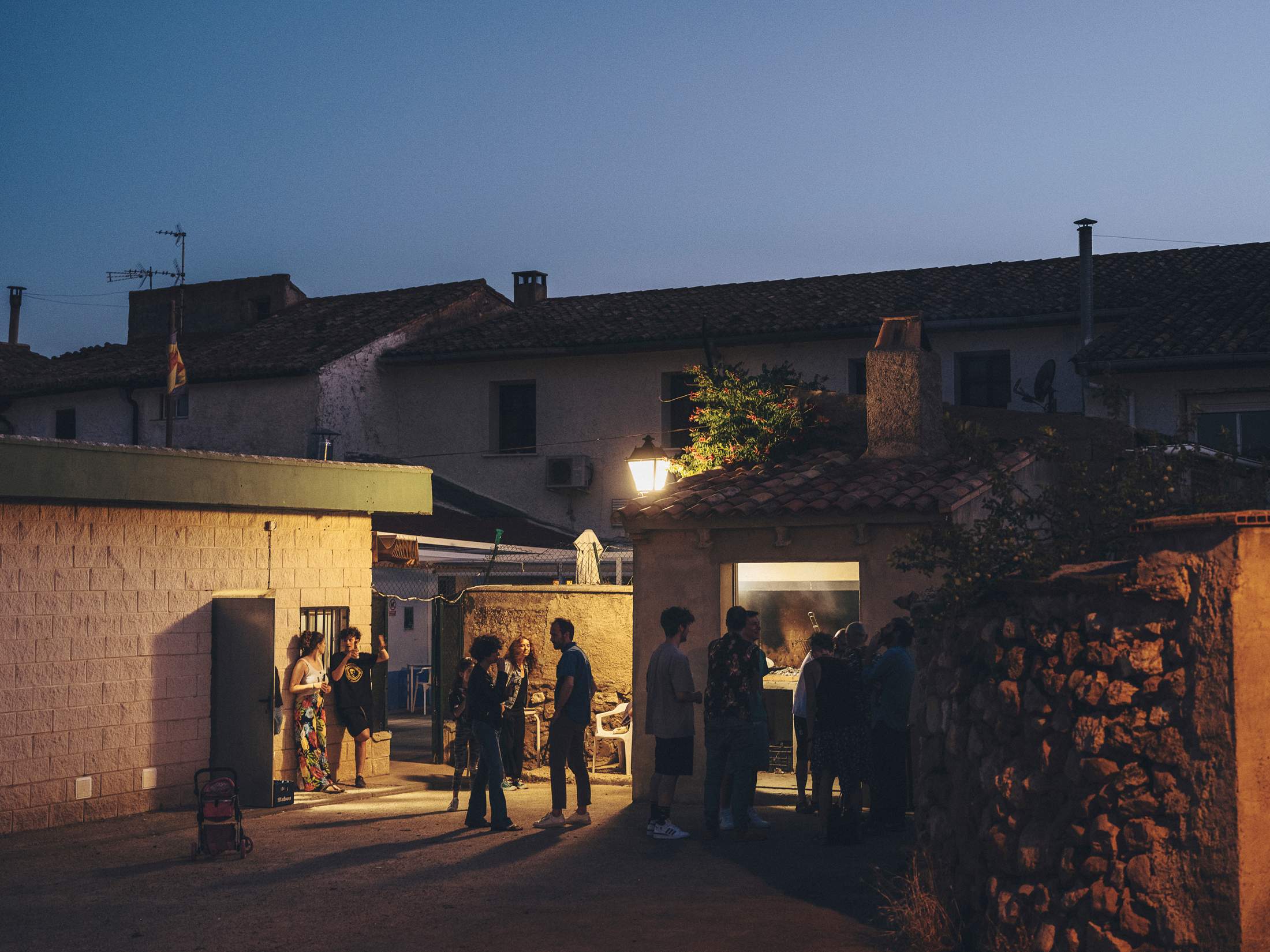
Drinks at Torralba de Ribota’s bar
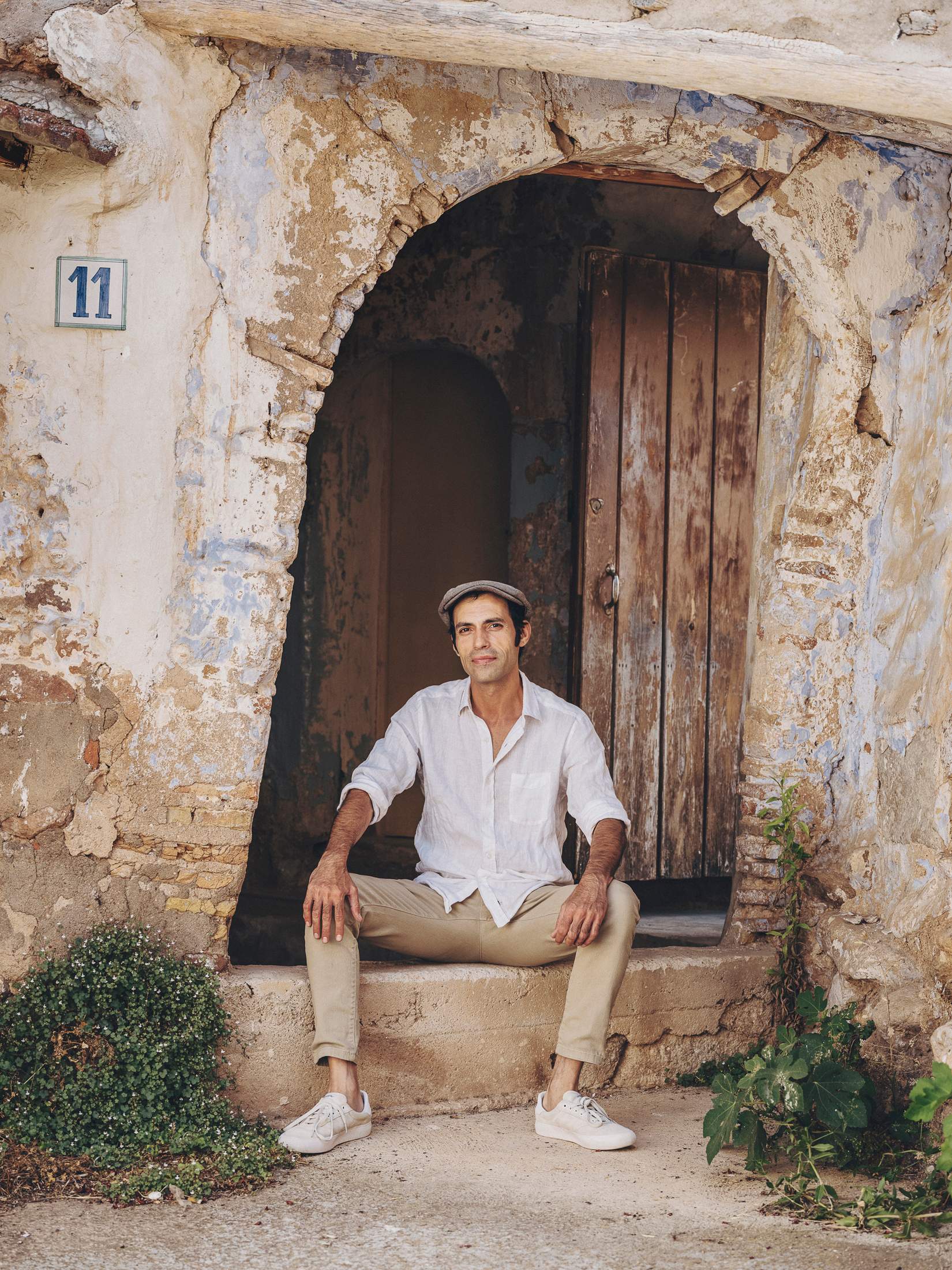
Alfonso Kint outside his home
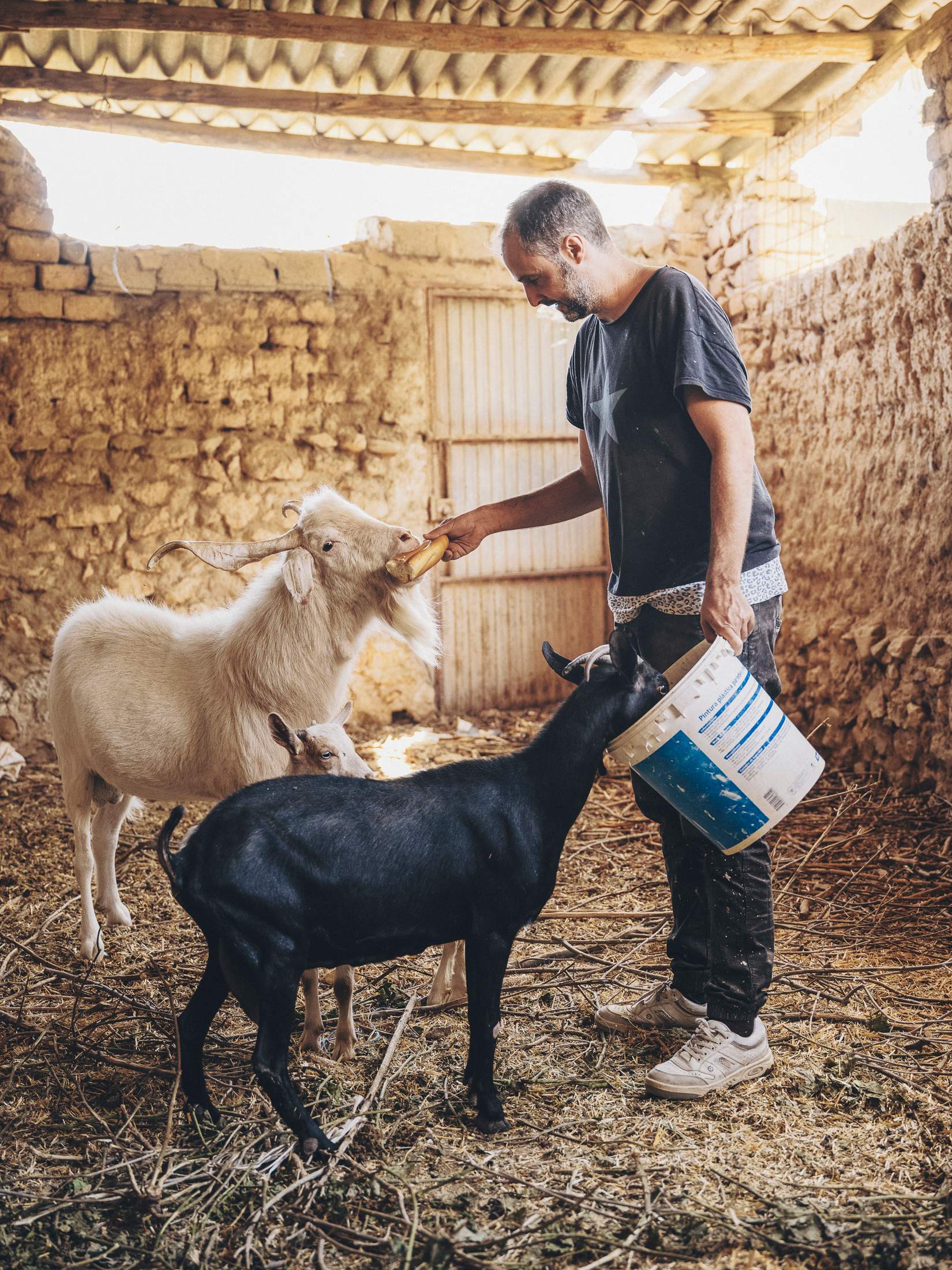
Comedian Quique Macías feeding goats

Artist Joo Eun Bae at her home studio in Torralba de Ribota
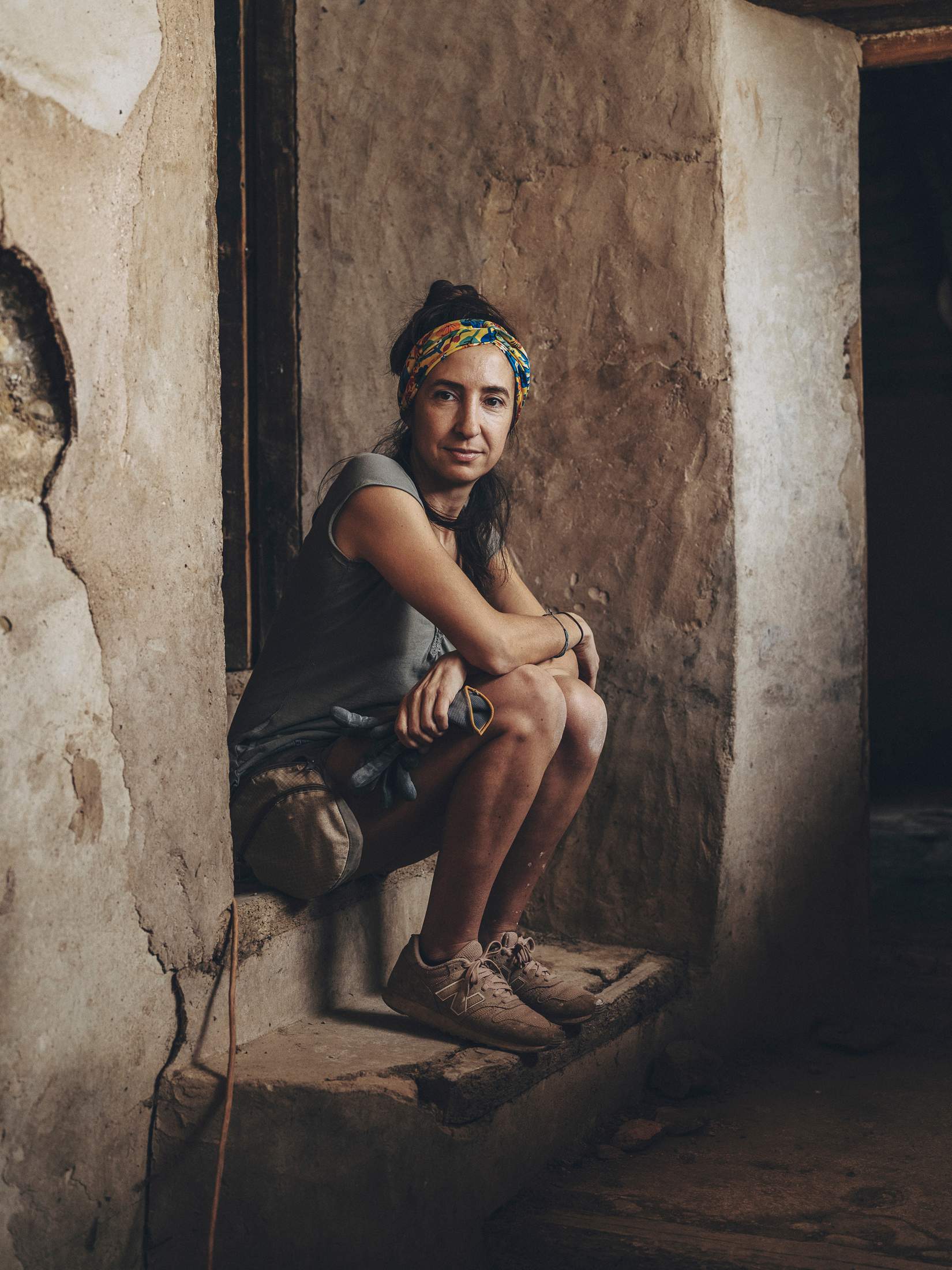
Miriam Estella, an attendee of the workshop in Used
The magnetic pull of the ancestral village is ingrained in Spanish folklore. We take a 20-minute drive northwest on a bumpy, unpaved track from Used to the settlement of Pardos. The village’s isolated location makes it easy to understand why it was abandoned in the 1970s. Today, people make the journey here to photograph its collapsed roofs and overgrown vegetation. But a walk among the ruins also leads to a water fountain, which was restored in 2015 by former residents. Next to it a tiled inscription reads: “Although I’m far from here, your memory doesn’t fade. The village where I was born left an imprint on my soul.” Even from a distant city, the village is never forgotten – nor is a return ruled out.
These sentiments clearly motivated Alberto Alfonso Pordomingo, co-founder of Apadrina Un Olivo (“Sponsor an Olive Tree”), who is based in the Aragonese village of Oliete. Surrounded by scrubby, undulating land, the 340-strong community – down from 2,500 in 1910 – is famed for its olive trees, 100,000 of which are at least 100 years old. Pordomingo wasn’t born in Oliete but felt a connection to the village that his grandparents and father called home. “My father’s parents said that there was no future in Oliete,” he says. “So my father went to Barcelona. He returned to the village two or three times but his parents sent him back to Barcelona every time – and that’s where he met my mother.”
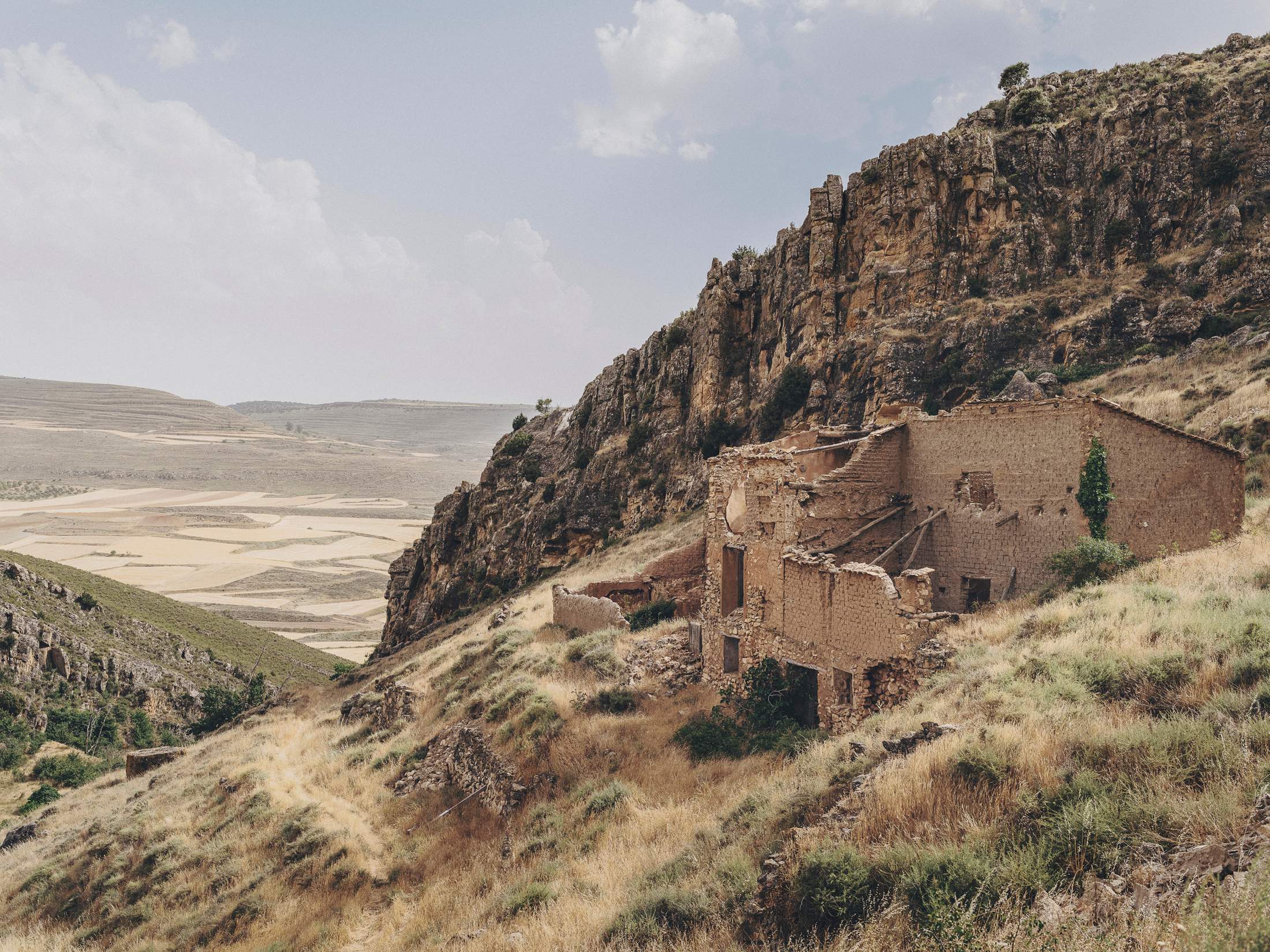
Pardos, a village abandoned in the 1970s
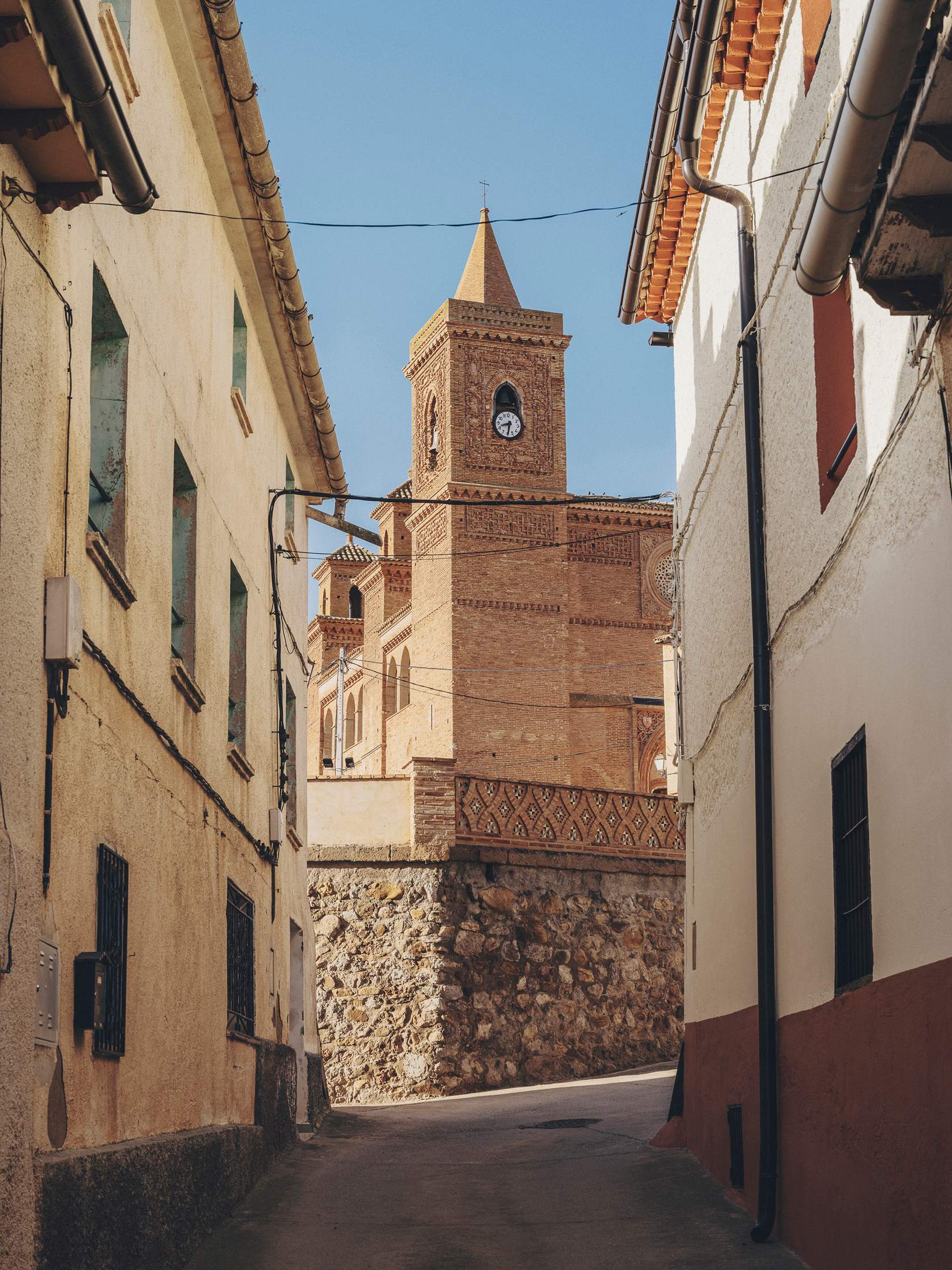
Torralba de Ribota in Aragón
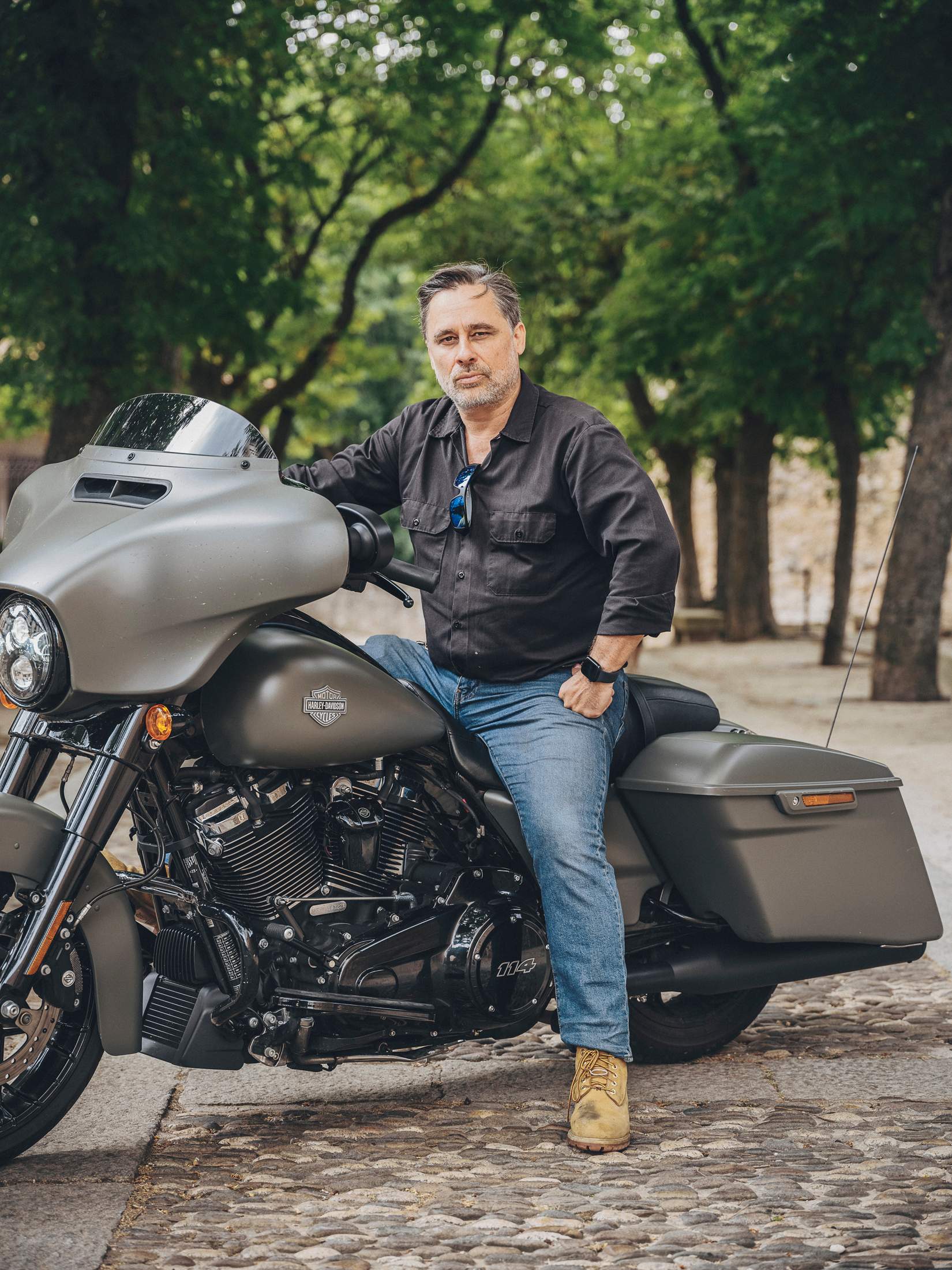
Ramón Pradera in Covarrubias

Ángel Ceña of Soria ¡Ya!

Getting one’s hands dirty
Pordomingo’s parents are retired now and spend much of their time in the village. One day, he had an idea. “I was with my parents picking the olives and that year there was a great harvest,” he says. “I said to them, ‘We’re here alone and yet there are so many olives. Something has to be done.’” In 2014, Apadrina Un Olivo was born with the aim of rescuing trees that had been abandoned through depopulation. Membership fees help to pay the trees’ owners – who often don’t want to give them up for sentimental reasons – a fee for the organisation to tend them. But the bulk of the money from the 7,000 “godmothers and godfathers” (one of whom is deputy prime minister Teresa Ribera) goes towards paying local people to work the land and produce oil so that they won’t have to look elsewhere for opportunities.
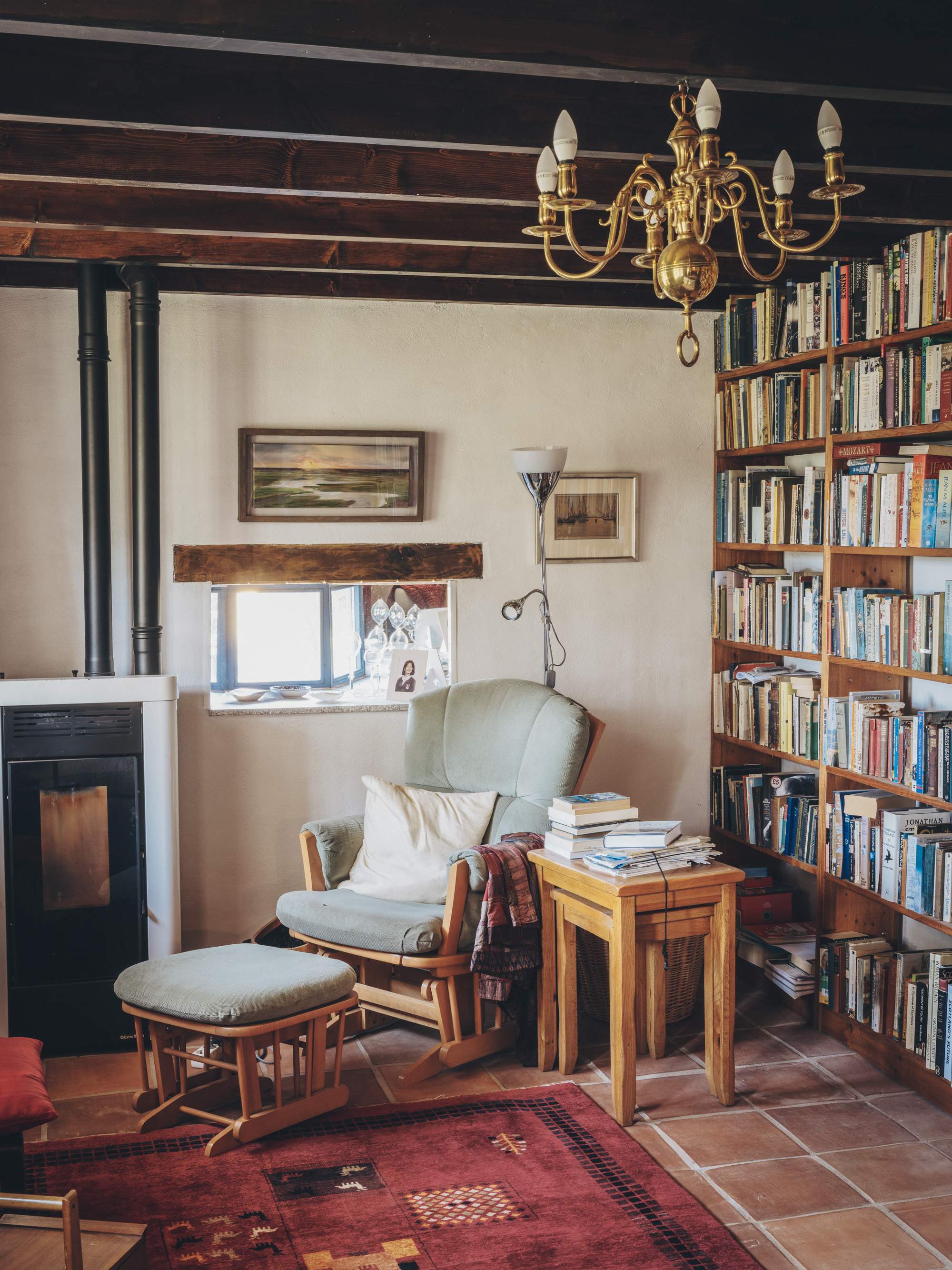
Galician home sold by Mark Adkinson
You can’t miss the company’s warehouse on the road leading into Oliete. Daubed on the building, which functions as an almazara (oil press), is a multicoloured mural by Madrid collective Boa Mistura, reading “Querer volver” (“To want to return”). It’s here that monocle meets Jaime Grimaldo, originally from Mérida in Venezuela, who helps to oversee the agricultural work and visits from the trees’ sponsors. Grimaldo says that Apadrina Un Olivo now employs 12 people from Oliete and two from the neighbouring municipality of Alacón. “That’s already important for the village,” he says, cigarette in hand, as he drives Monocle to visit the trees in a pick-up truck. “We live and work here.”
Apadrina Un Olivo has also allowed Ricky García, whose mother’s last name is Oliete, to return to his ancestral home. He lived in the Dominican Republic for almost a decade but wanted a different future for his daughter. The influx of people means that the school here has gone from having just four students a few years ago to 14 today. While this increase may seem small, it has a ripple effect, says García. “The two restaurants stay open, the pharmacy too. There’s an economy behind all of this.”

Shepherd in Fonfría, in the province of Teruel, Aragón
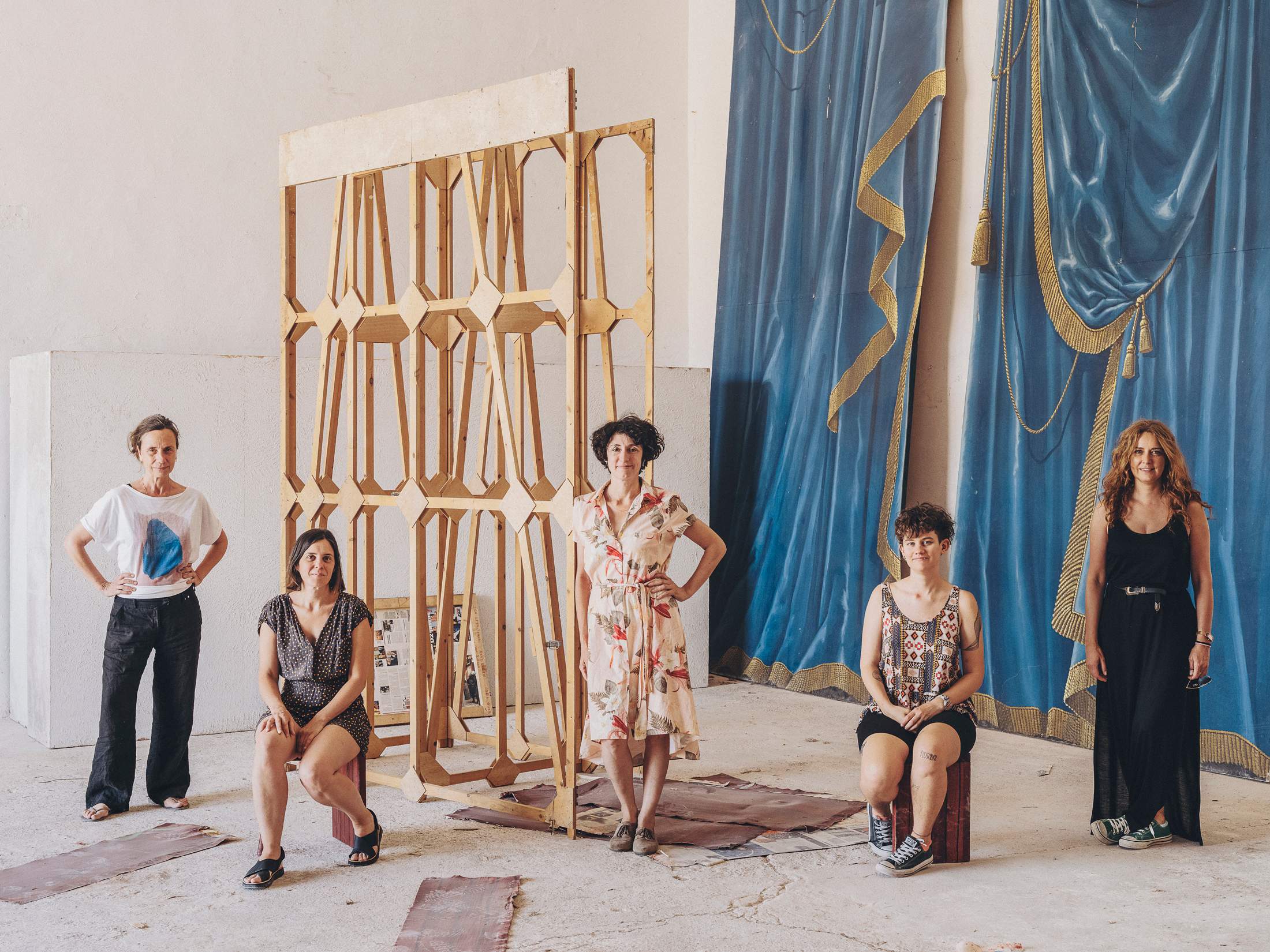
The Pueblos en Arte team with Lucía Camón (centre) and co-founder Ana Bettschen (far left)
Places such as Used and Oliete aren’t about to crack the Empty Spain riddle overnight. While they might convince people to move or return, there’s still the demographic challenge presented by the fact that by 2050 nearly one in three people in Spain will be 65 or older. Currently about a quarter of the population in municipalities of fewer than 5,000 people are over that age. But these towns are proof that you don’t need to accept decline as inevitable and that rural areas need not be unattractive to young people and those with families. “The important thing is that there’s hope,” says Pordomingo. Not content with co-founding the olive-tree project, he’s moved on to recuperating abandoned orchards in a neighbouring village, co-authored a paper on cultivating resilience in rural areas and launched an initiative called, rather poetically, “Intelligent rural alarm clocks”, which incubates businesses in the countryside.
“Before, young people left the countryside and didn’t return. But now we have generated a return path, even if it’s for a limited time”
These places also offer a model that can be replicated. Just as in the second half of the 20th century, when chain migration meant that young people followed each other from village to city, one person moving back today might mean that another follows. To appreciate its potential, this reverse migration has to be considered with a view to the long-term future of rural communities – but it’s already making a difference. In Used, for example, Alberto Sánchez’s restoration work enticed Guillermo Bosque to buy a house. And Sánchez reports that another architect and his partner have recently bought a home, with more showing interest. Perhaps the most demonstrable example of this type of migration, which requires equal measures of free spirit and pioneer attitude, can be found at monocle’s next stop in Torralba de Ribota.
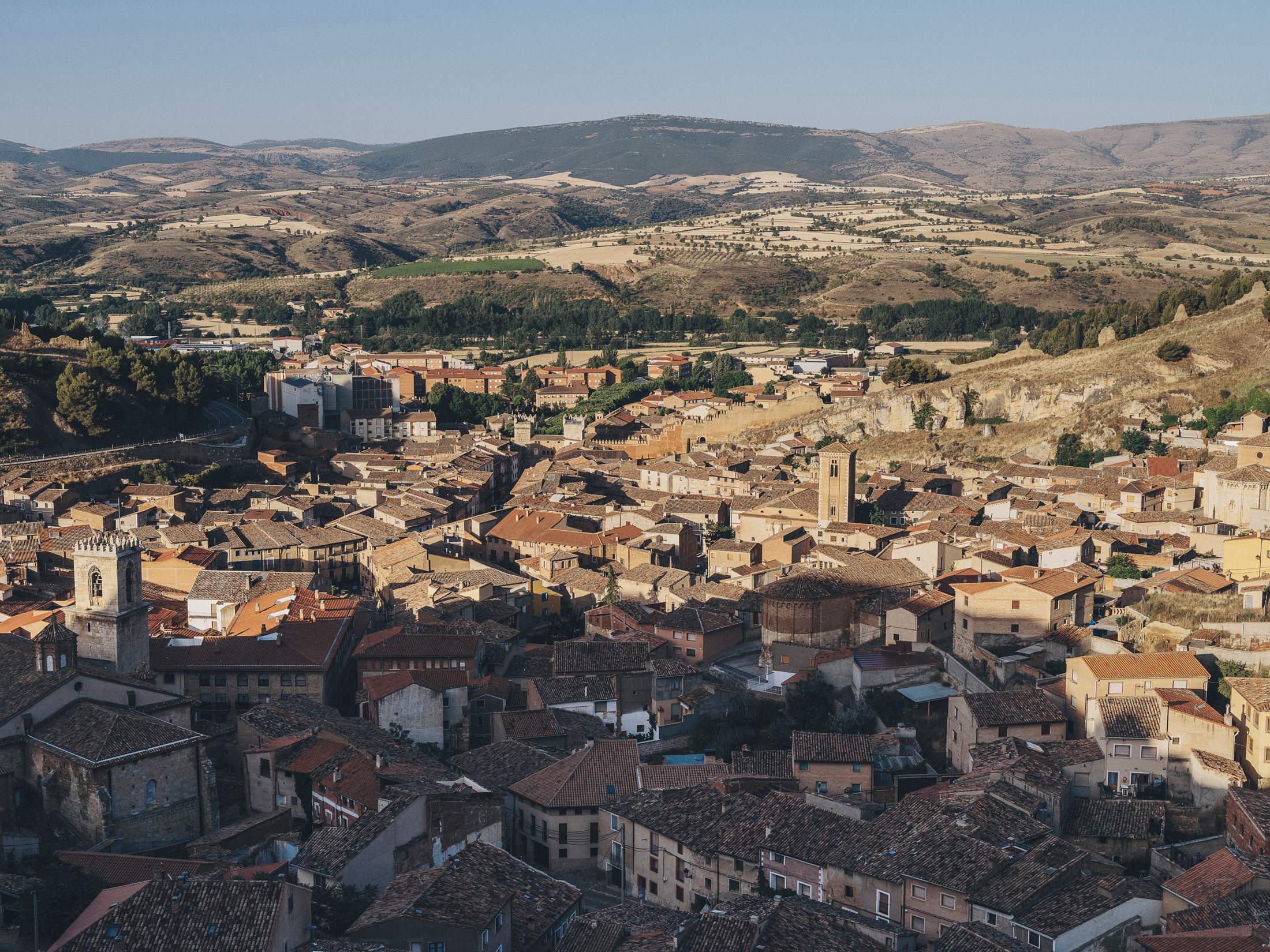
Picturesque town of Daroca in Aragón
The village is dominated by a magnificent 14th-century Mudéjar church, built by Moorish craftsmen who continued to live and work in Christian Spain after the Reconquista. It also benefits from being a short drive from one of the largest towns in Aragón, Calatayud, which has a stop on the high-speed railway line between Madrid and Barcelona. Even so, it hasn’t been spared the rural decline. Lucía Camón meets monocle on one of the village’s narrow streets and we take a seat at the local bar. After inheriting a house, she arrived in the village from Madrid in 2012 with her partner Alfonso Kint and their young daughter Greta. On the patio, plastic tables and chairs are set up and a group of silver-haired abuelas is playing cards. Ice-cold bottles of Zaragoza-brewed Ambar beer go for €1 a pop. While the old-timers clearly have a special status, it’s hard not to notice the younger people. Children are running around and a brick barbecue is being fired up. Later, people tuck into grilled meat on hunks of white bread, washed down with tinto de verano and a magnum of red wine.
“When you create movement, the place wakes up,” says Camón. After moving here, she set about creating a lively cultural scene, believing that the arts can be a vehicle for change. She is the co-founder of Pueblos en Arte, whose work includes organising artist residencies and the annual Saltamontes Festival, which held its third edition in July and covers everything from theatre to art. “I want this sort of place for my daughter; it’s for selfish reasons,” she says, laughing. “But actually, it’s for everyone living around here.”
The next morning, Alfonso Kint welcomes Monocle at his home office, a building accessed through a large external door that has warped with age. “At the beginning it took me three days to upload a video but now we have a fibre-optic internet connection,” he says, looking remarkably fresh despite the previous night’s revelry. A former storyboard editor in Madrid, Kint is the director of a documentary about the village and his family’s experience called Soñando Un Lugar (“Dreaming of a Place”). Although life here has been an adjustment, he says that it also brings plenty of freedom.
Kint explains that Camón worked hard looking for houses in the village so that other creatives could follow in their footsteps. The first was Ana Bettschen, the co-founder of the Pueblos en Arte team, who studied theatre with Camón. Next was Quique Macías, a stand-up comic who spends much of his time travelling around Spain. Macías takes Monocle to meet some goats, which he insists on feeding a baguette, joking that they act as village gardeners, before showing us the concrete being poured in one of his home’s outhouses that he wants to turn into a performance space.
Helping him handle the cement mixer is artist Javier Barreno, who found out about the village through Kint’s brother. He bought a house here six years ago but moved from Madrid in 2021 with his wife, fellow artist Joo Eun Bae. In the couple’s house and studio, Bae is working on a large canvas, building layers of paint on one of her many works inspired by mountains. Around the back, Barreno is building a foundry for brass and bronze and a kiln for firing ceramics. Bae and Barreno are two of the 15 or so people that Camón says have moved here, following the example of her family.
A similar migration pattern, albeit motivated by different reasons, can be found by heading west, to Spain’s largest region, Castilla y León. Just north of one of its provincial capitals, Soria, is the tiny hamlet of Fuentelfresno. Unlike the other settlements we’ve visited, many of the houses here are new builds. According to flip-flop-wearing mayor Adela Trassierra, who has lived in the village since 2016, Fuentelfresno was “practically empty” by the end of the 1990s. In fact, there was only one elderly couple living here, who were reliant on a public telephone for communication. It’s hard to believe now as Trassiera meets Monocle in the company of several other new inhabitants and their children. According to the mayor’s latest count, there are now 28 adults and 22 children in the village.
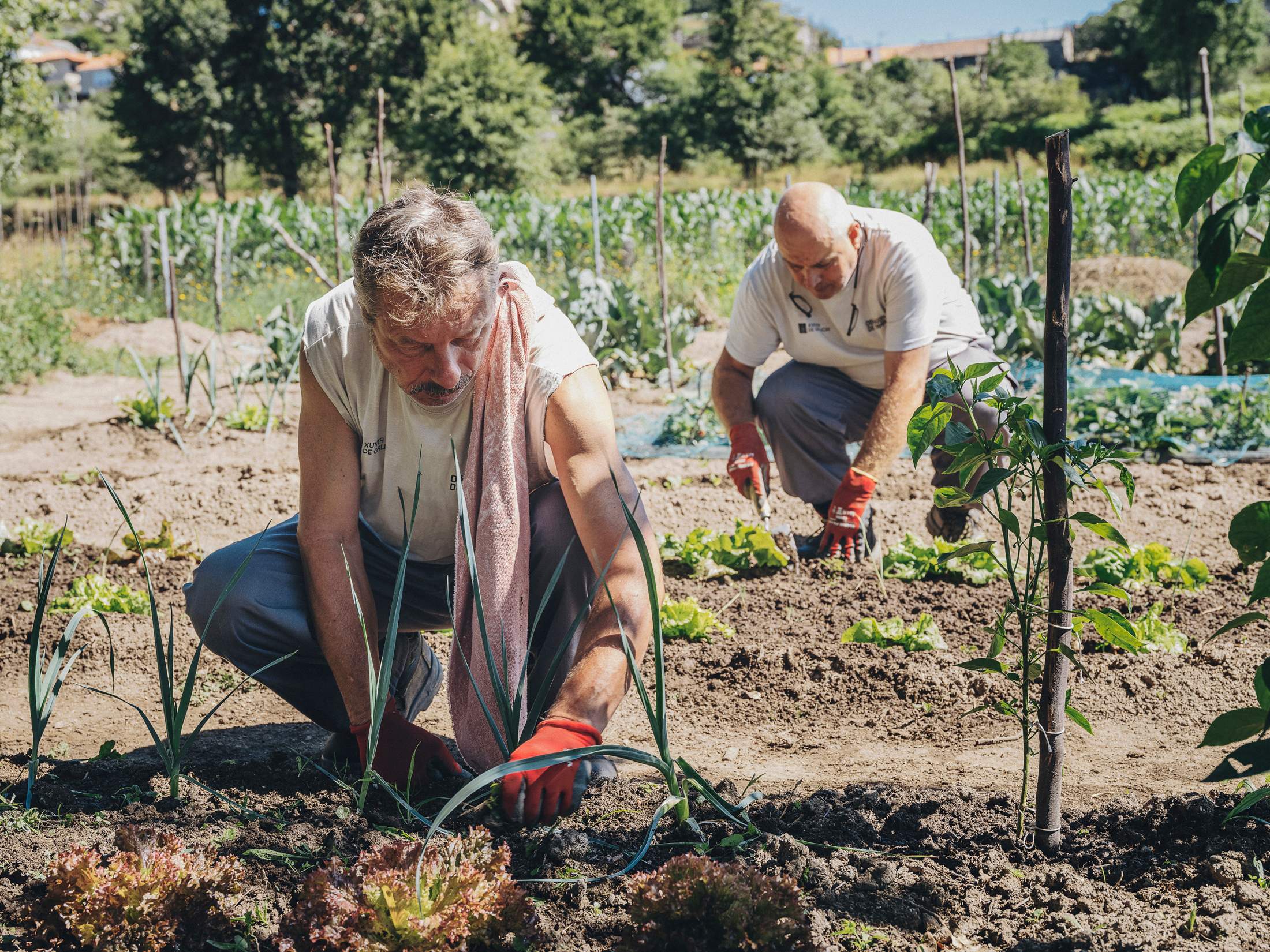
Organic farming in Muimenta, Galicia
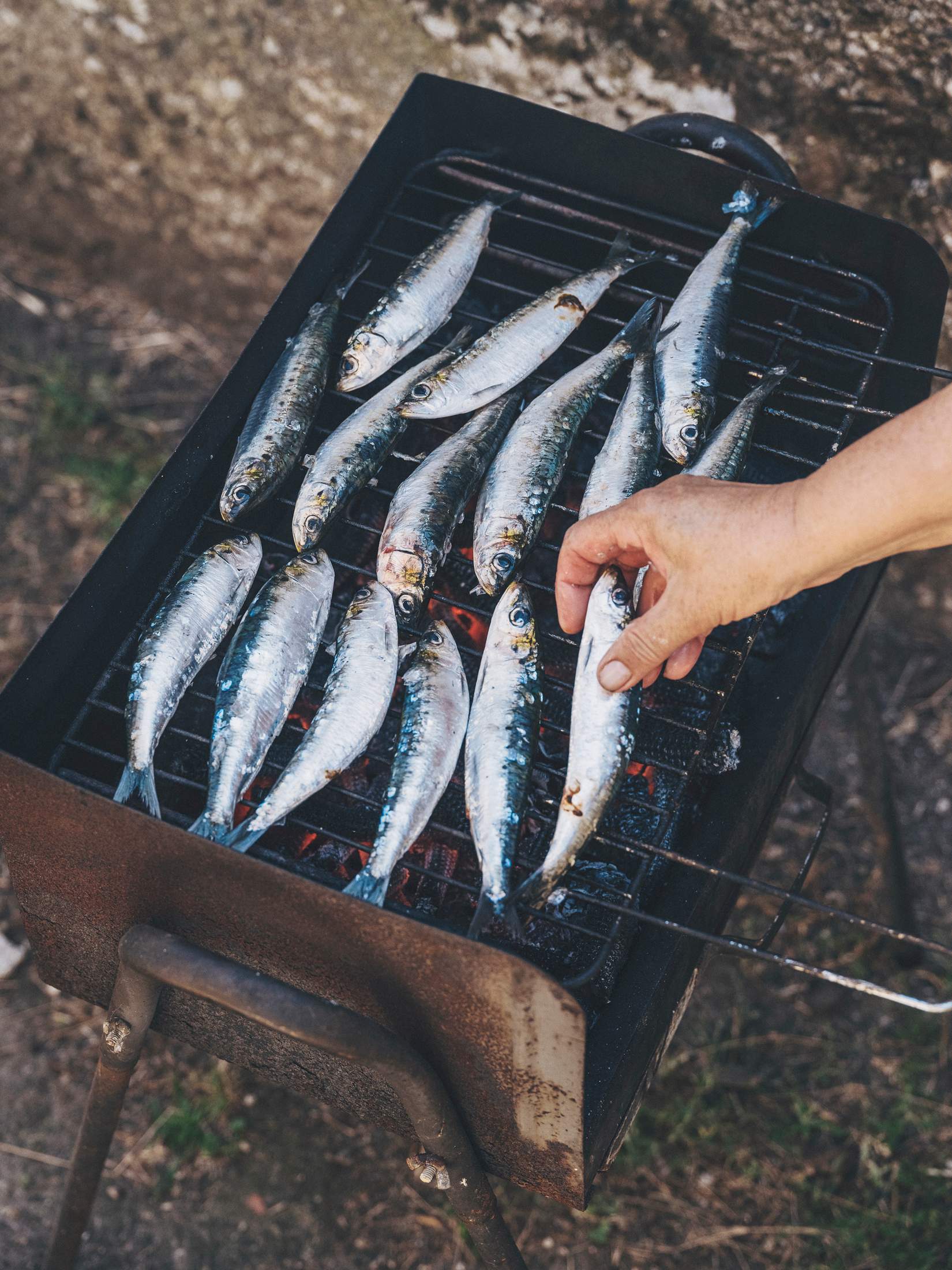
Local speciality
One of the main reasons for this turnaround in fortunes is the school here. After original pioneers Victoria Pascual and Alfonso Pardo settled in Fuentelfresno and encouraged friends to follow, the new residents set up a private school for three- to six-year-olds. It operated on a slightly alternative model, with a focus on the outdoors, and proved such a hit that it was incorporated into the public system in 2015, expanding to become a mixed-age rural school. It has fostered three waves of migration and been responsible for a feeling of “community around the college”, according to one of the parents, José Miguel Díez. “Instead of people just coming back for the summer, they now live here all year and leave for the summer,” he says.
The nearby provincial capital of Soria has an elegant feel to it, with wide shopping streets and Romanesque cloisters. Look more closely, however, and you’ll notice black-white-and-red posters for local political party Soria ¡Ya! (“Soria Now!”) plastered in the windows of businesses across town. Soria ¡Ya! was formed in 2001 as a social movement fighting depopulation in a province that is ground zero for the problem. Soria has a population density of just 8.5 inhabitants per square kilometre – it’s just one of three Spanish provinces that has a figure below 12.5. In March 2019, fed up with politicians not doing enough, the organisation got together with others from more than 20 Spanish provinces and marched on Madrid as part of a so-called “Revolt of España Vaciada”, demanding better funding to halt rural depopulation. More than 100,000 people attended.
Off the back of this protest movement, Teruel Existe (“Teruel Exists”), which hails from the same province in which Oliete is located, decided to become a political party and run in the November 2019 general election. It ended up as the primary party in its province, winning three national seats (one in Congress and two in the Senate) and even played a key part in getting Socialist prime minister Pedro Sánchez appointed. Inspired, Soria ¡Ya! threw its hat into the ring for local elections in February this year and won three seats in Castilla y León’s legislature.
Ángel Ceña, head of the party, meets Monocle at its inconspicuous headquarters in Soria’s historic centre. He is quick to point out that Soria ¡Ya! is neither left, right nor centre. “Our political line is the economic and demographic development of Soria province,” he says. “If you ask me my opinion about euthanasia or abortion, I have one but it’s personal.” Instead, he’s focused on petitioning for motorway and train development and a special tax break that would allow Soria to give incentives to companies moving here. “There’s a trend that seems to push people towards the city but until when?” he says. “And is it sustainable?”
Successive national governments have tried to solve the rural problem. Yet for Sergio Del Molino, author of a book on depopulation called, of course, Empty Spain, there are still “very few political resources” allocated to it. That said, the current leftist coalition has established a secretary for the demographic challenge and named former senator Francés Boya to the position. Talking to Monocle, he admits that the task ahead is “tremendous” and that government funds are currently focused on the immediacies of inflation and pandemic-related social issues. But he parries that Spain is advancing in its plans to have the whole country connected to high-speed internet by 2025, something that he says will reduce the disparity between urban and rural.
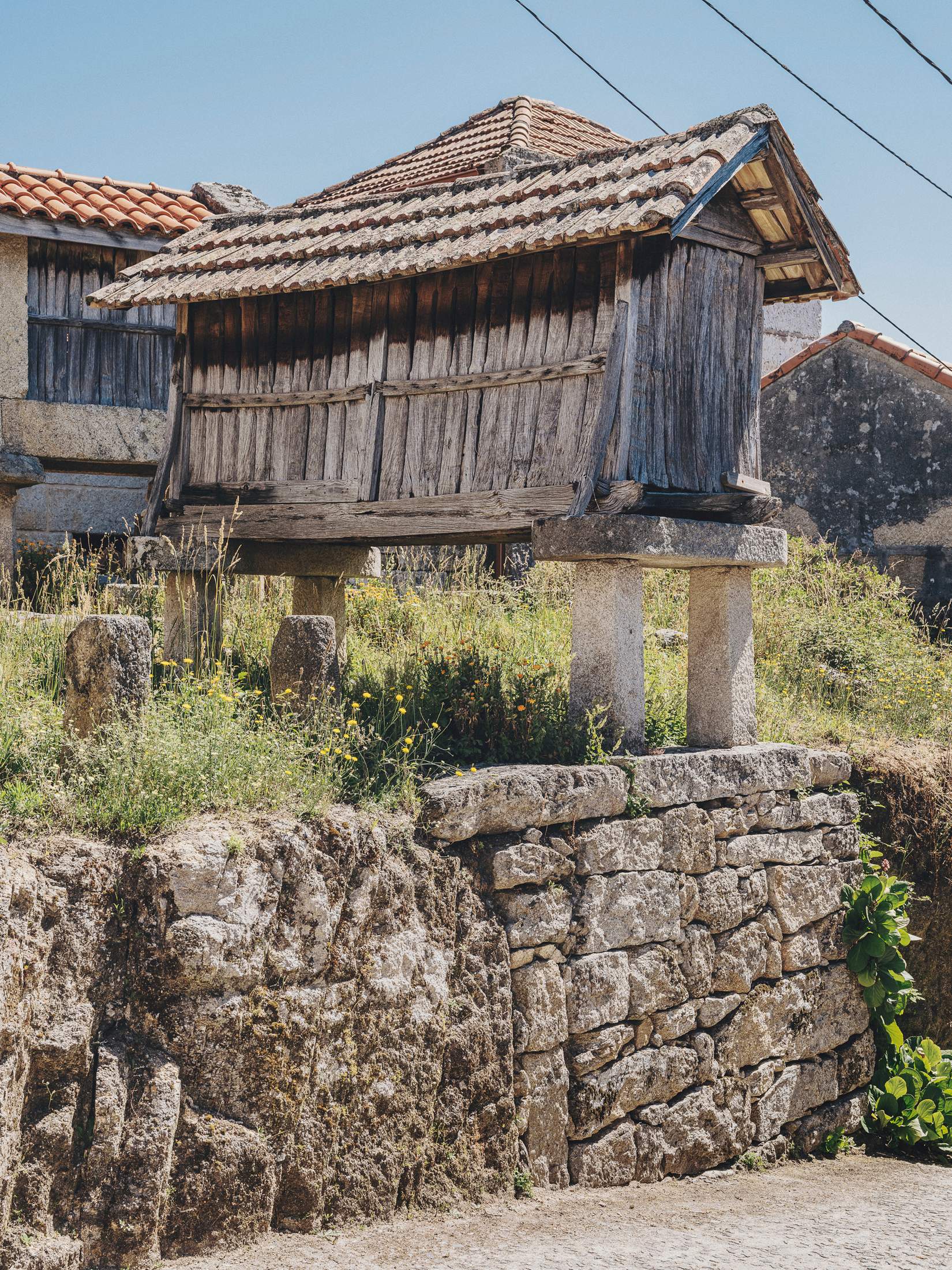
An ‘hórreo’, used for grain storage, being reconceived in Muimenta
Boya also mentions a plan called “Campus Rural”, in which university students spend part of their holidays doing paid work in the countryside. It was inspired by a similar plan, informally referred to as “Rural Erasmus”, launched in Zaragoza in 2018. “Before, young people left the countryside and didn’t return,” says Boya. “But now [through Campus Rural] we have generated a return path, even if it’s for a limited time.” This year’s inaugural programme has enrolled 350 students, with plans to greatly expand that figure by next year.
One of the most grandiose government projects we hear about is in Galicia, Spain’s verdant northwestern region of rolling hills and dense woodland, which feels a long way from Aragón and Castilla y Léon. Our destination is the settlement of Muimenta, one of 18 model villages that the Galician government is piloting. The hope is that they can show the way for a sustainable economic model that could include self-sufficient energy production.
Muimenta’s tale is, by now, a familiar one: generations lost to emigration and deindustrialisation. But something different is also happening. Apart from trying to revive farming in the village through a focus on organic produce, Muimenta is working with Galician non-profit consultancy Fundación RIA, created by architect David Chipperfield. “Our work is to set the guidelines for the renovation of the village, both the built and natural environment,” says Manuel Rodríguez from the foundation. “We’ve been looking to identify and protect the values of the town.” The preliminary masterplan includes a blueprint for a social centre rebuilt from the ruins of a building that looks onto a 13th-century granite church. An application for public funding has been made and it’s hoped that private investment will follow.
Galicia was once famed for its tiny remote settlements scattered across the green mountains; these are now largely deserted. Mark Adkinson, a Brit who has been in Spain for 50 years, is the founder of Galician Country Homes. He is working to repopulate the empty villages and abandoned estates here. He shows Monocle a map with 3,500 pins denoting places of interest. Selling mostly to foreigners who are keen to take on a restoration job, Atkinson says that 18 to 20 homes are snapped up every month.
We encounter a similar hybrid entrepreneur, mixing business with social good, on one of the trip’s last legs. Ramón Pradera meets monocle in the village of Covarrubias – population 539, down from 627 a decade earlier – famed for its 10th-century fort and wooden-beam houses. It is possibly the prettiest place we’ve visited so far and clearly has tourism potential. A former newsreader and motorbike enthusiast, Pradera arrives in wrap-around sunglasses on a green Harley Davidson. Declaring that he has clocked up 1,500,000km visiting Spain’s countryside, he’s also the founder of online platform Vente a Vivir a un Pueblo (“Come and live in a village”). Villages pay to be on the site which, he argues, gives visibility where governments have failed. Content covers everything from home costs to schooling and transport, alongside drone-shot video.
Pradera recognises that the picture is mixed for rural Spain and that some villages will have to fail for the most viable – the prettiest or most industrious – to survive. While many of those who live in Spanish villages feel that the government has given up on them, and that climate change is making the country’s arid centre even more difficult to inhabit, Pradera refuses to see the future anything less than positively, arguing that villages offer more today than cities. “I don’t use the term España Vaciada,” he says. “I use ‘Spain of opportunities’. Because the future right now is in the villages.”
A European problem
“There used to be 105 children living on this street. Today, my 10-year-old daughter plays on her own,” says Venelin Kovachev, a fisherman in his 40s, who lives in Tutrakan, a town on the banks of the Danube in northern Bulgaria. Once prosperous, like thousands of other settlements across the country, it is shrinking fast. Bulgaria has lost more than a quarter of its population since 1988. According to the National Statistics Institute, it will suffer a 35 per cent decline by 2050.
Many of its Eastern European neighbours will suffer a similar fate. According to data collected by Eurostat in 2021, Latvia, Lithuania, Romania, Croatia and Estonia are all projected to lose at least 20 per cent of their populations by 2050, as a result of a drop in fertility rates and migration. Researchers from the University of Washington’s Institute for Health Metrics and Evaluation predict that the world’s fertility rate, which was about 2.4 per cent in 2017, will decline to less than 1.7 per cent by 2100.
The problem is particularly pronounced in rural communities: in Europe, four out of five are expected to suffer a decline in population by 2050. Bulgaria’s rapid shrinkage, for instance, is glaringly evident in the number of empty houses and boarded-up shops. A fatal combination of ageing populations, declining birth rates and migration will have disruptive social, economic and political consequences for decades to come. The job of politicians across Europe is to devise a solution before it’s too late.
Konstantin Vulkov is the programme director of Bulgarian radio station Darik Radio.
Carnivore comeback
In Europe, populations of wolves, lynx and bears have been rebounding after near extinction. Thanks to legal protection and the large-scale abandonment of pasture as rural populations swap farms for urban areas, these shy creatures have now been documented in every country in mainland Europe – even densely populated ones such as Belgium, where the first wolf in a century was spotted in 2018.
More than 12,000 wolves are now thought to roam the continent. In Germany, wolf packs have found sanctuary in former Cold War military grounds and post-industrial sites. The smaller lynx, which preys on roe deer, birds and rodents, is now believed to number in excess of 9,000, while brown bears have spread through Scandinavia, the Carpathians, Cantabria and the Alps, reaching a population of 17,000.
For those shepherds in remote regions where wolves now roam, this comeback has not been entirely welcome. Many have had to relearn ancient methods of defending their animals. Livestock-guarding dogs, such as Maremmani shepherd dogs and Pyrenean mountain dogs, can be used to guard sheep in places where electric fences are not appropriate or not enough to repel wolf packs on their own.
Pilot schemes have popped up to train farmers to work with these large and powerful dogs, which will bond closely to their herds and fight off wolf attacks. The challenge now is to learn to live alongside our wolf, lynx and bear neighbours – as peacefully as we can.
Cal Flyn is the author of ‘Islands of Abandonment: Life in the Post-Human Landscape’

